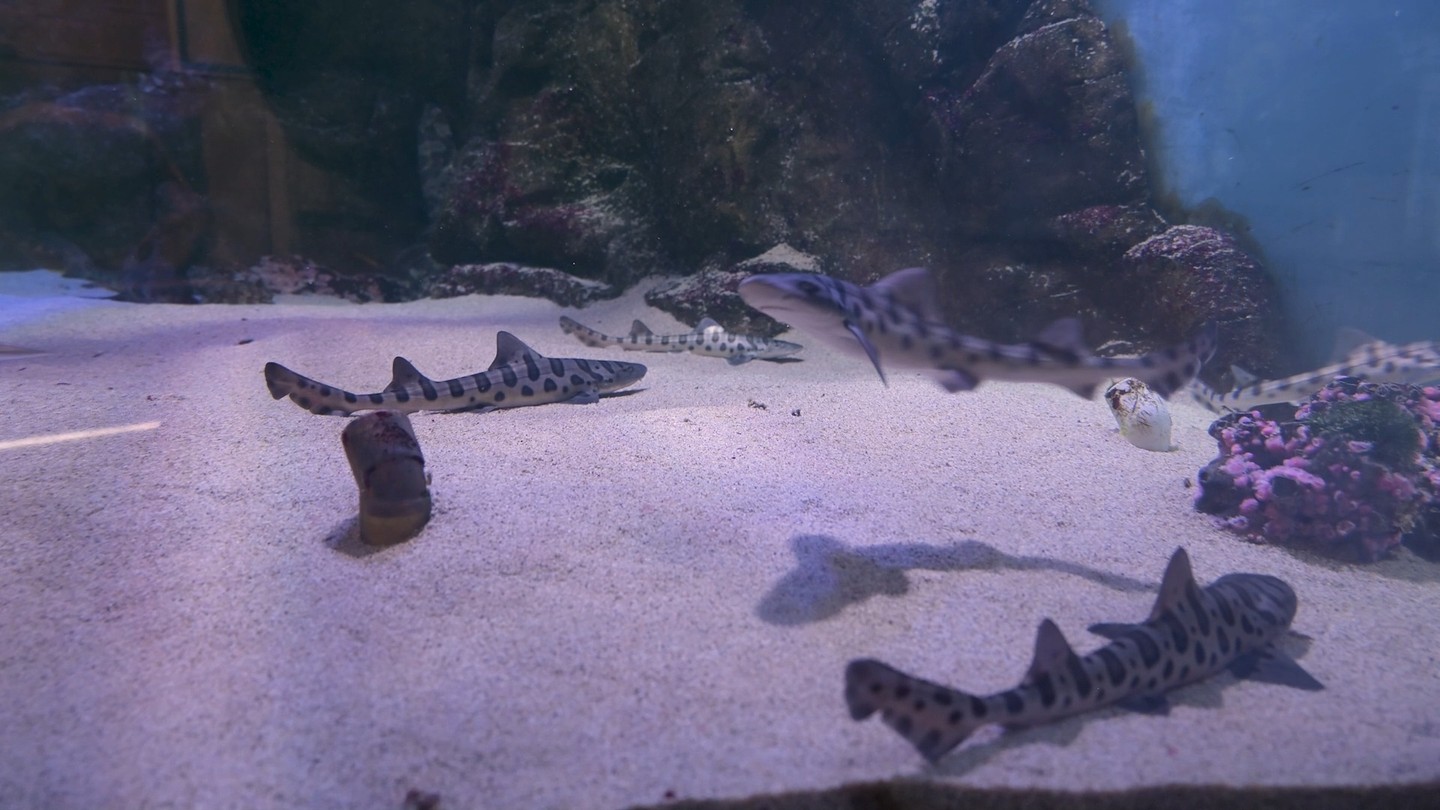Summary:
– The excitement of the arrival of new leopard sharks at the zoo
– The reasons behind the decision to bring in new sharks
– The unique features and behaviors of leopard sharks
– The importance of conservation efforts for these amazing creatures
– The opportunity for visitors to learn and interact with the sharks at the zoo
A hidden wonder silently glides through the water in the ocean’s depths, where the sunlight barely reaches. Its sleek body and mesmerizing pattern make it a true masterpiece of nature. And now, at our zoo, you have the incredible opportunity to witness these wonders up close – our NEW leopard sharks!
At first glance, you may think of sharks as fearsome predators lurking in the darkness, ready to pounce on their prey. But leopard sharks are different. As you come by this week, you’ll notice their unique markings, resembling a leopard’s spots, hence their name. These spots may appear random, but they work as camouflage, allowing them to blend seamlessly into their surroundings.
Why did we decide to introduce new leopard sharks to our exhibit? Our previous batch of adult sharks wasn’t magnificent, but as they grew larger, we noticed they were getting a bit too big for our exhibit. To ensure their well-being and happiness, we decided to find new homes where they could thrive. This, in turn, opened up an opportunity for us to bring in a fresh batch of wild-caught leopard sharks.
These new sharks, just like their predecessors, captivate us with their grace and beauty. They may not be as large as some of the other shark species, but what they lack in size, they make up for in character. Leopard sharks are known for their docile nature, often swimming peacefully among their fellow tank mates. This allows visitors to witness the intricate dynamics of the marine ecosystem.
Leopard sharks, despite their calm demeanor, are still skilled hunters. Their streamlined bodies and powerful tails enable them to navigate the water effortlessly. Their main diet consists of small fish, crustaceans, and mollusks, which they devour with their rows of sharp teeth. It’s fascinating to watch them in action as they swiftly dart towards their prey, their tails propelling them forward, and in an instant, they disappear into the depths of the exhibit.
Conservation is a crucial aspect of our work here at the zoo, and leopard sharks are no exception. They may not be as endangered as some other species, but their presence plays a vital role in maintaining the intricate balance of our planet’s marine environments. Overfishing and habitat destruction pose significant threats to these magnificent creatures, and by showcasing them at the zoo, we hope to raise awareness about the need to protect and conserve our marine ecosystems.
But it’s not just about observing these marvelous creatures from a distance. We believe in creating interactive experiences that allow our visitors to connect with nature more deeply. Our trained educators will be on hand to provide fascinating insights into the world of leopard sharks. You’ll have the opportunity to learn about their behavior, habitat, and efforts to safeguard these incredible species.
And if you’re feeling particularly adventurous, you might even have the chance to feed the leopard sharks yourself! Under the guidance of our expert keepers, you’ll get an up-close encounter with these graceful creatures. It’s an experience that will leave you awe-inspired and with a newfound appreciation for the beauty and diversity of our natural world.
So come by this week and witness the arrival of our new leopard sharks. They may not have the reputation of their ferocious cousins, but they possess a beauty and grace that will capture your heart. Explore the depths of their habitat, learn about their crucial role in marine ecosystems, and be reminded of the importance of conservation efforts. Together, let’s celebrate these incredible creatures and work towards a future where their existence is secure.
*****
Source Description
Come by this week to see our NEW Leopard sharks! Several large adult sharks were getting a bit too big for our exhibit. They’ve traveled to new homes, and we have placed them in our new, wild-caught batch! They look happy and cute!


